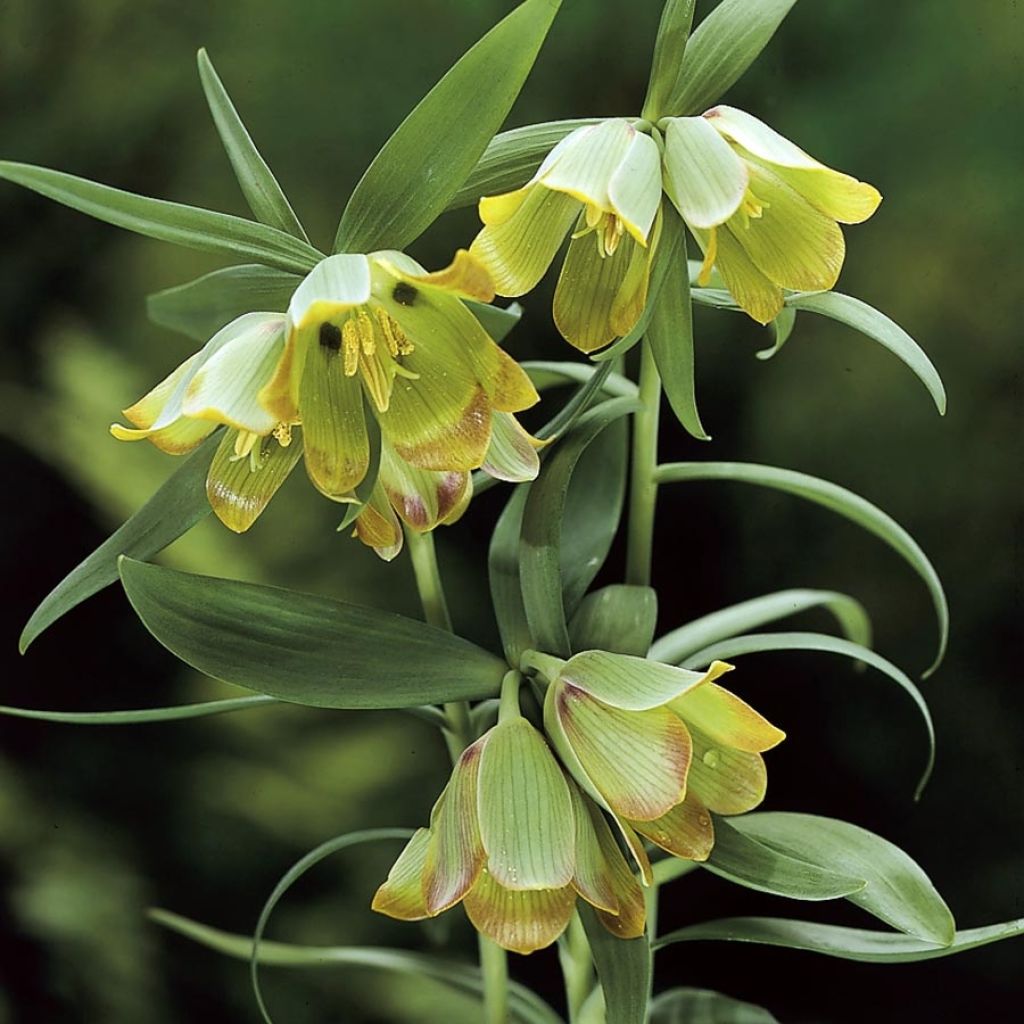

Fritillaire pontica
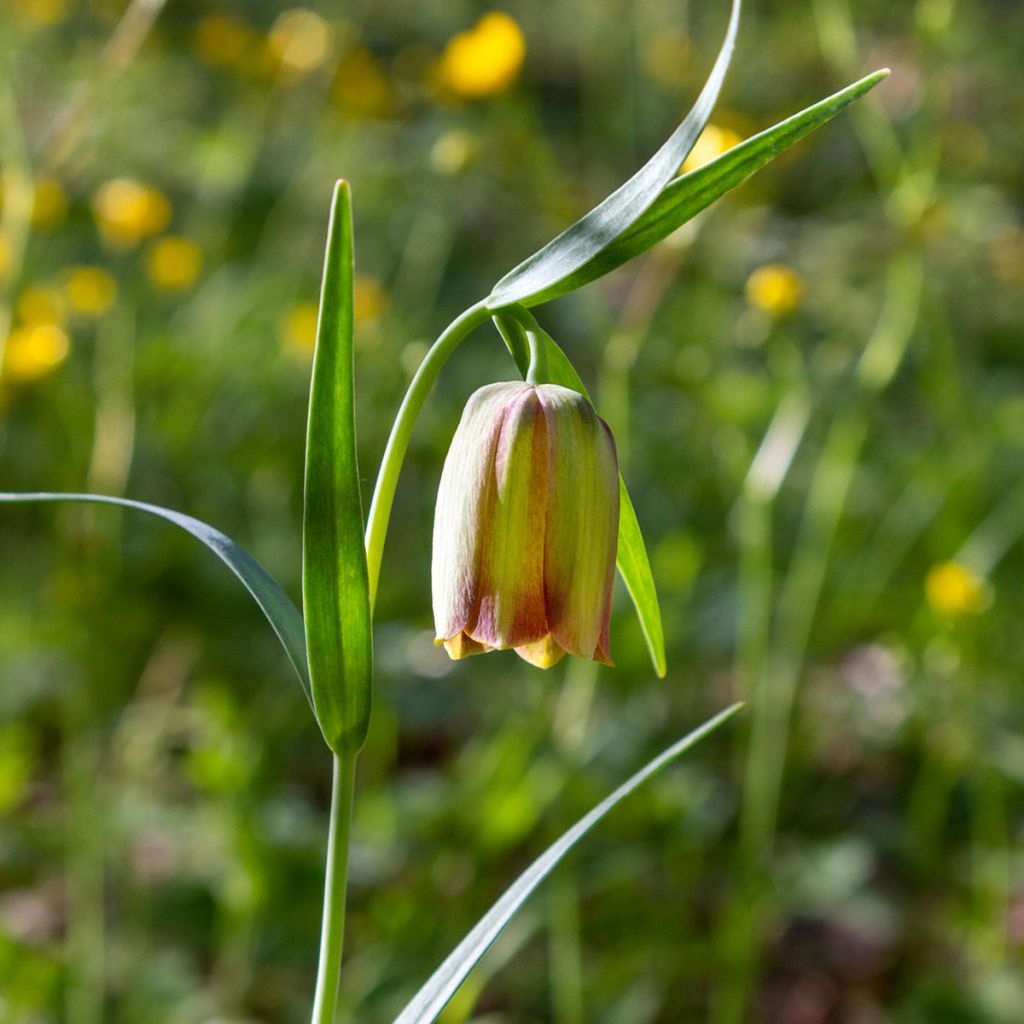

Fritillaria pontica - Fritillaire botanique
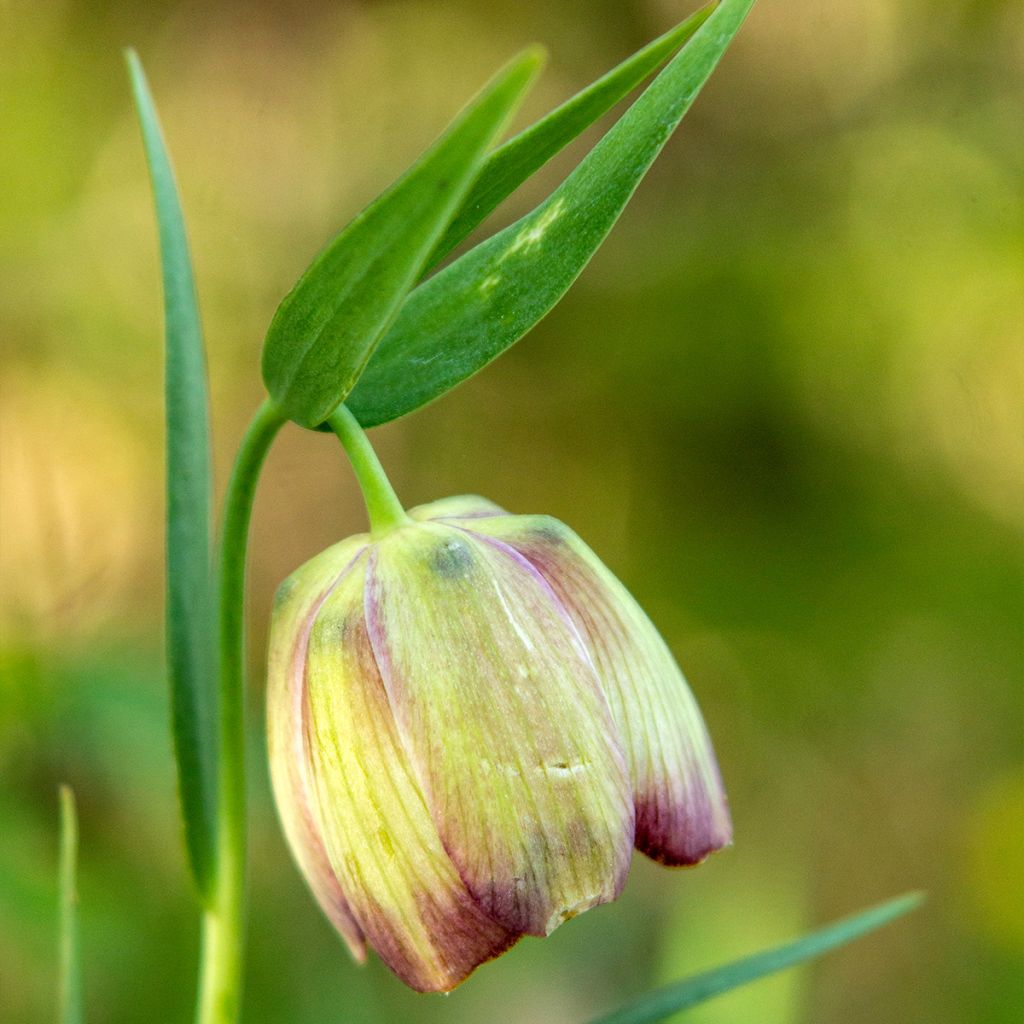

Fritillaria pontica - Fritillaire botanique
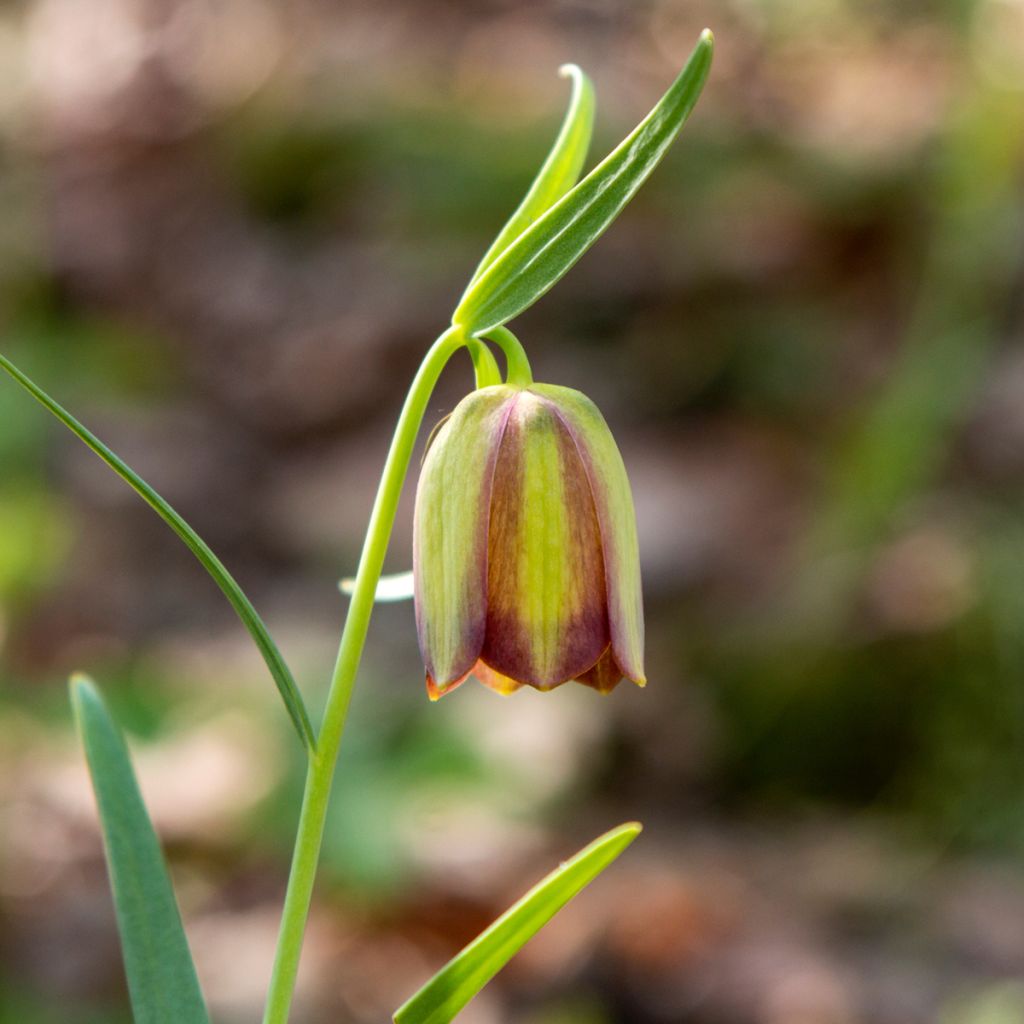

Fritillaria pontica - Fritillaire botanique
Fritillaria pontica
Fritillaria pontica
Pontic Fritillary
This plant carries a 6 months recovery warranty
More information
We guarantee the quality of our plants for a full growing cycle, and will replace at our expense any plant that fails to recover under normal climatic and planting conditions.
From €5.90 for pickup delivery and €6.90 for home delivery
Express home delivery from €8.90.
Does this plant fit my garden?
Set up your Plantfit profile →
Description
The Fritillaria pontica is a hardy fritillary, native to rocky slopes in the Balkans and Turkey. It is a bulbous plant that thrives in not too dry rock gardens where it always makes an impression. Its spring flowering takes the form of pendulous campanulate bells, displaying a delicate and bright colour, a pale lemon green often washed with brownish-violet on the edges. The bulbs are planted in autumn, in partial shade or non-scorching sun. This plant has been awarded by the R.H.S in England for its ornamental qualities and performance in the garden.
The Fritillaria pontica belongs to the lily family. It is native to the mountains of Albania, Bulgaria, northern Greece, and western Turkey. It is a plant whose bulb is formed of thick scales, and whose vegetation emerges from the ground in late winter or early spring. It produces stems that will reach 20 to 38 cm (8 to 15in) in height when in bloom. These stems bear lanceolate, narrow, gray-green leaves, grouped in threes. The flowering takes place in April-May. At the top of each stem, a flower forms, hanging towards the ground, measuring 3 to 4 cm (1 to 2in) in diameter. The outside of the corolla is yellow-green suffused with brownish-purple on the edges, the inside is green with 6 small brown spots. The plant goes dormant in summer.
This montane Fritillaria pontica is particularly well-suited to rock gardens, but it does not like excessively dry places and dislikes heatwaves. In nature, it benefits from moisture in spring, during the snowmelt, while enduring relatively dry summers, but without excessive heat. In winter, the ground is normally covered with snow, which protects the bulb from both cold and excessive moisture. These are the conditions that should be replicated in the garden to successfully grow it and see it flower faithfully year after year. To accompany it, consider, for example, pasqueflowers, as well as botanical tulips and botanical daffodils.
Fritillaria pontica in pictures
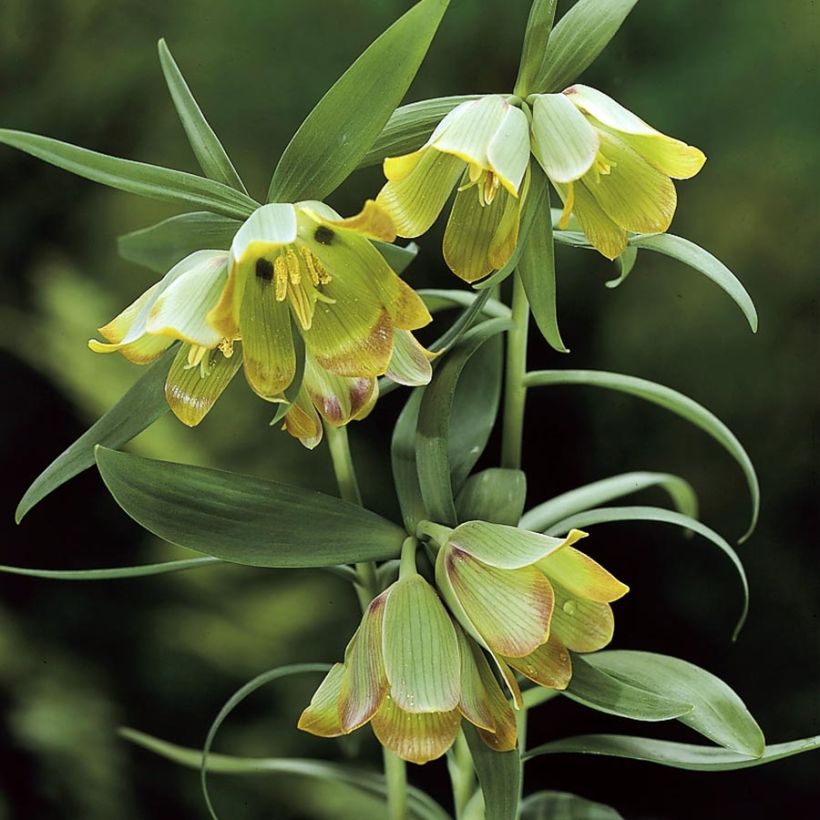

Plant habit
Flowering
Foliage
Botanical data
Fritillaria
pontica
Liliaceae
Pontic Fritillary
Caucasus
Planting and care
This bulbous plant should be planted in autumn at a depth of 15 to 20 cm (6 to 8in) in well-draining soil. Adding sand or fine gravel can prevent bulb rot during winter. After flowering, the leaves should be left to allow the bulb to regenerate. The Fritillaria pontica can be grown in a pot with well-draining substrate and should be sheltered in an alpine greenhouse during winter (cold but dry).
This montane Fritillaria pontica is particularly suited to rock gardens, but it does not tolerate excessively dry conditions and dislikes heatwaves. In nature, it benefits from spring moisture during snowmelt, while enduring relatively dry summers without excessive heat. In winter, the ground is usually covered in snow, which protects the bulb from both cold and excessive moisture. These are the conditions that should be replicated in the garden to successfully cultivate and see it flower faithfully year after year.
Planting period
Intended location
Care
This item has not been reviewed yet - be the first to leave a review about it.
Haven't found what you were looking for?
Hardiness is the lowest winter temperature a plant can endure without suffering serious damage or even dying. However, hardiness is affected by location (a sheltered area, such as a patio), protection (winter cover) and soil type (hardiness is improved by well-drained soil).

Photo Sharing Terms & Conditions
In order to encourage gardeners to interact and share their experiences, Promesse de fleurs offers various media enabling content to be uploaded onto its Site - in particular via the ‘Photo sharing’ module.
The User agrees to refrain from:
- Posting any content that is illegal, prejudicial, insulting, racist, inciteful to hatred, revisionist, contrary to public decency, that infringes on privacy or on the privacy rights of third parties, in particular the publicity rights of persons and goods, intellectual property rights, or the right to privacy.
- Submitting content on behalf of a third party;
- Impersonate the identity of a third party and/or publish any personal information about a third party;
In general, the User undertakes to refrain from any unethical behaviour.
All Content (in particular text, comments, files, images, photos, videos, creative works, etc.), which may be subject to property or intellectual property rights, image or other private rights, shall remain the property of the User, subject to the limited rights granted by the terms of the licence granted by Promesse de fleurs as stated below. Users are at liberty to publish or not to publish such Content on the Site, notably via the ‘Photo Sharing’ facility, and accept that this Content shall be made public and freely accessible, notably on the Internet.
Users further acknowledge, undertake to have ,and guarantee that they hold all necessary rights and permissions to publish such material on the Site, in particular with regard to the legislation in force pertaining to any privacy, property, intellectual property, image, or contractual rights, or rights of any other nature. By publishing such Content on the Site, Users acknowledge accepting full liability as publishers of the Content within the meaning of the law, and grant Promesse de fleurs, free of charge, an inclusive, worldwide licence for the said Content for the entire duration of its publication, including all reproduction, representation, up/downloading, displaying, performing, transmission, and storage rights.
Users also grant permission for their name to be linked to the Content and accept that this link may not always be made available.
By engaging in posting material, Users consent to their Content becoming automatically accessible on the Internet, in particular on other sites and/or blogs and/or web pages of the Promesse de fleurs site, including in particular social pages and the Promesse de fleurs catalogue.
Users may secure the removal of entrusted content free of charge by issuing a simple request via our contact form.



































